- Home
- slideshows
- miscellaneous
- The life of Laura Ingraham: How a young conservative became a national figure, then a Fox News firebrand
The life of Laura Ingraham: How a young conservative became a national figure, then a Fox News firebrand
Laura Ingraham was born in June 1963, in Glastonbury, Connecticut. It's a wealthy suburb, but her upbringing was working class: her mother was a waitress, her father owned a car wash. Her family were patriotic, too — they flew the American flag all year round.

She grew up with three brothers, and told C-Span, "they were pretty rough and tumble," so she got used to clashing with people. She also wasn't political at school, but she was athletic.

Sources: The New York Times, Washington Post, Newsweek, Hartford Courant, C-Span
One pivotal moment in her youth came watching Vietnam War protesters burn the American flag on the news. She asked her mother why they were doing it, and her mother answered: "Because their parents didn't teach them about respect."

In the mid 1980s, she went to Dartmouth College and became the first female editor of The Dartmouth Review, a controversial right-wing newspaper. She liked the contrarian position, and told the Hartford Courant that "the Review took over my life."

She said: " Here you had all these '60s liberals — who used to be storming administration buildings themselves — in power at Dartmouth, and they didn't know what to do with this conservative independent paper."
Sources: The New York Times, Washington Post, HuffPost, Hartford Courant
She was sued for libel by a professor, William Cole, after she wrote that his class was "the most outrageous," on campus, and called him a "used Brillo pad."

Source: AP News
Cole, who is black, claimed during the suit that the article titled, ″Prof. Bill Cole's Song and Dance Routine," was racially-motivated. Ingraham and the paper were defended by a law firm pro bono.

Cole eventually dropped his case. Afterwards, both parties said they were vindicated.
Cole, who was promoted to full professor during the case, said: "I'm doing what the college pays me to do, and the fact that I was promoted is an indication of that."
Ingraham said, "I'm not sure who won but I feel I've made a point. It is a tremendous breakthrough for investigative journalism in the classroom.″
Source: AP News
Most famously, she sent an undercover reporter into a gay students' alliance meeting. The meeting's transcript was published, and the student officers were named. She wrote in the magazine that all the group's members were "cheerleaders for latent campus sodomites."
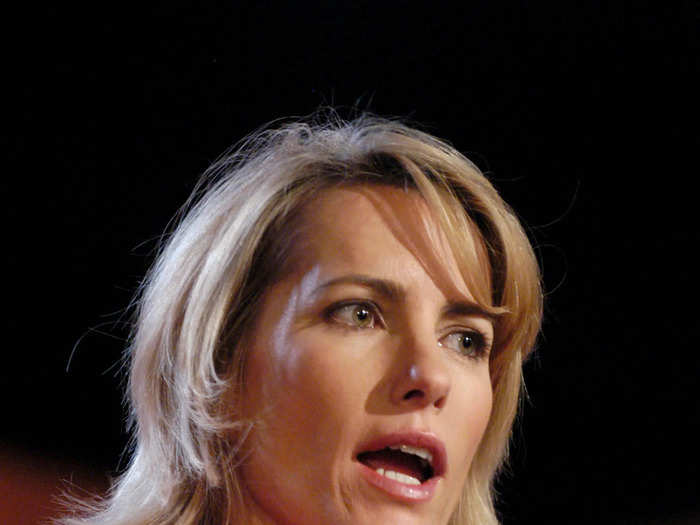
She said it was done to ensure the group's spending of a college grant was transparent.
Sources: The New York Times, Washington Post, HuffPost, CNN
Years later, in 1997, she wrote an op-ed for The Washington Post about her which explained why she'd reported on the gay association at Dartmouth.

She wrote that it was to find out how student funds were being spent and to "demonstrate the double standard Dartmouth had created by funding the group." She said the newspaper "adopted a purposefully outrageous tone."
But the op-ed didn't end matters. According to CNN, Jeffrey Hart, the faculty adviser for the Dartmouth Review, wrote to the Weekly Standard after she published her op-ed and called it a "phony political confession." He also said she had held "the most extreme anti-homosexual views imaginable."
Sources: The New York Times, Washington Post, HuffPost, CNN
In 1984, Ingraham was out partying with her conservative friends when she watched Ronald Reagan win his second election in a landslide. She told Newsweek she enjoyed watching the "seething leftists," and added, "God. I loved the 80s."

Although, according to the Hartford Courant, she was in a cafeteria and it was math-club geeks who were cheering with her.
Source: Newsweek
After college she was brought into Reagan's White House to work on topics like abortion and school prayer. She was most surprised at how big her office was.

Sources: Washington Post, The New York Times
In 1988, she started working as a speechwriter for the Secretary of Transportation. But she was aware that a career in bureaucracy wasn't for her. She told The New York Times: "I think if you stay in Washington, you forget what mainstream America is all about."

Sources: Washington Post, The New York Times
She got a law degree from University of Virginia School of Law. While there, she drove a Honda, and let people know her political views via her number-plate, which said "FARRGHT."

Source: The New York Times
She then clerked for a federal judge named Ralph Winter in New York, before clerking for Supreme Court Justice Clarence Thomas.

Sources: The New York Times, Newsweek
From 1993 to 1996, she worked as an attorney at the Wall Street law firm Skadden Arps. At that time, she was still unsure what to do with her life. So, she started writing op-eds, and quickly made a name for herself. In 1995, she and a few others were on the front page of The New York Times Magazine as young conservatives.

That same year, she organized the Dark Ages conference, a conservative New Years weekend. It was in response to a Clinton-run holiday known as the Renaissance Weekend.

Between political sessions, attendees could kick and punch boxing bags, which had images of prominent Democrats taped to them.
Sources: Hartford Courant, Newsweek
In 1996, she started appearing on cable news, via MSNBC. According to the Los Angeles Times, the Clinton Lewinsky scandal had made space for a new type of political pundit — young conservative women, known as the "pundettes."

These included Ingraham, along with Ann Coulter, and Kellyanne Fitzpatrick (later Kellyanne Conway).
Sources: The New York Times, Los Angeles Times, Newsweek, Virginia Law, Hartford Courant
It didn't take her long to make headlines. In 1997, on MSNBC, one Democrat asked "What does that mean?" five times. Then she said: "No one wants to see fat people on the cover of magazines in swimsuits.''

Source: The New York Times
She was young to be on television, but to anyone who was critical, she told The New York Times: "It's not just like I showed up blond and in a miniskirt and said, 'Hire me!'"

She said: "If I'd known it was going to be that easy, I never would have clerked for the Supreme Court and worked for a prestigious firm and written as much as I have. All that's as valuable as covering fires in Des Moines.''
Source: The New York Times
Political punditry was also changing. In 1997, for Salon, Eric Alterman wrote: "More than anyone else alive, I fear, Laura Ingraham speaks to the Zeitgeist of the contemporary American media."

Alterman also wrote that she beat him in an argument by laughing. She later relied on humor on her radio show. She used sound effects like a monkey screeching when a politician spoke, and segments with names like "Deep Thought of the Day," and "Lie of the Day."

She was often inflammatory in her language. For instance, when she covered immigrant news, she called it an "illegal immigrant sob story."

Source: Washington Post
In the late 1990s, she got her own television show on MSNBC called "Watch it." She told the Hartford Courant that if Republicans wanted to be relevant they needed to get fashionable, and understand musicians like Lauryn Hill. Despite playing Bob Dylan when they went to commercial breaks, the show was cancelled after 17 months.

She later said it should have been called, "Watch it Get Canceled!"
Sources: HuffPost, Hartford Courant
In 2000, she published her first book, "The Hilary Trap." One of the book's main points was that Clinton had damaged women's rights by demanding that they get gender privileges.
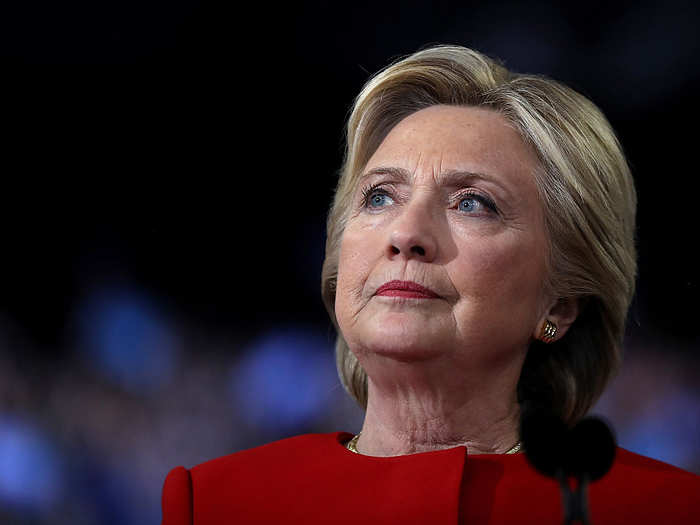
According to The New York Times, she "turned Hillary into a stand-in for everything she dislikes about the legacy of the 60's, from old-line feminists to people who oppose school vouchers."
She's published frequently since. In 2003, she published "Shut Up and Sing: How Elites from Hollywood, Politics, and the UN Are Subverting America."
In 2001, she launched her radio show, titled, "The Laura Ingraham Show." It was a success. In the early 2000s, it was syndicated to more than 200 stations, and it ended up being syndicated to 300 stations, with an estimated 5 million weekly listeners.

Sources: The New York Times, The Hollywood Reporter
She began to break away from the mainstream GOP in the early 2000s, according to Newsweek. While she had been a fan of Reagan's politics, she didn't agree with some of President George W. Bush's decisions, in particular how the Iraq War was handled, and nominating Harriet Miers for the Supreme Court.

Ingraham thought Miers was too liberal. According to the Washington Post, Ingraham, along with her conservative peers, "didn't sink the Harriet Miers nomination on their own. But in the blink of a news cycle, they turned against their president, framed the debate and provided the passion that undermined her case."
In 2005, Miers withdrew her nomination.
Ingraham's relationship with the mainstream GOP didn't improve with presidential candidates John McCain or Mitt Romney, who both lost to Barack Obama.
Sources: Newsweek, The New York Times
In 2005, she was diagnosed with breast cancer. On the day of the surgery, she called in to tell her listeners about the cancer, and she asked for their prayers. She recovered from the cancer, and called herself a "thriver" rather than a cancer "survivor."

Sources: CBS Philly, C-Span
In 2007, she released her third book, "Power to the People." According to Publisher's Weekly, she wanted Americans to take back the phrase back from groups that had made America, "a slave to fringe groups, political correctness, expanding bureaucracies, and our own consumerism."

Sources: HuffPost, Publishers Weekly
In 2008, she adopted her first daughter from Guatemala, called Maria. She later adopted two more children — Dmitri and Nikolai, from Russia.

Sources: Washington Post, People
In 2010, she published "The Obama Diaries," which was a New York Times bestseller. It's a satirical, fictionalized account of her finding a collection of White House worker's diaries in the Watergate complex.

Sources: ABC News, The New York Times
In 2011, Ingraham was at the receiving end of a slur by MSNBC host Ed Schultz, who called her a "right-wing slut." He insulted her after she criticized Obama for visiting Ireland while Missouri was dealing with a deadly tornado. Schultz was taken temporarily off-air, and he apologized. Ingraham accepted his apology.
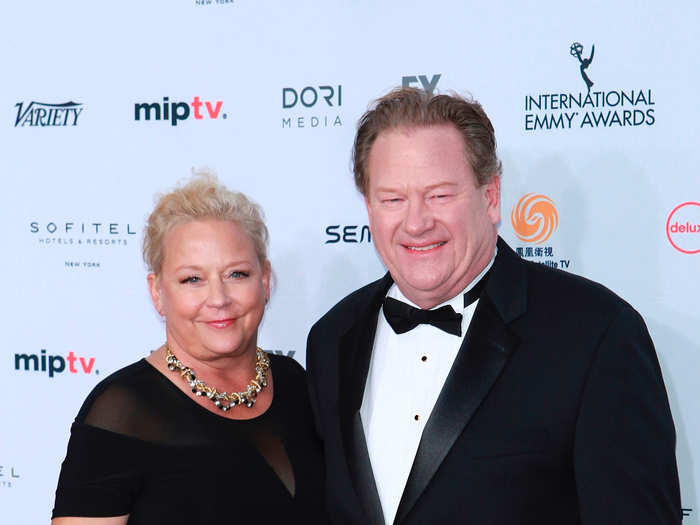
Sources: The New York Times, Washington Post, Washington Post
In 2012, she paused her radio show after leaving Talk Radio Network. According to the Los Angeles Times, there had been friction between Ingraham and the network's management.

She said: "After much thought and reflection, I have decided to pursue my first loves — modern dance and the xylophone. In the highly unlikely event that these efforts do not prove fruitful, I intend to return to radio."
Source: Los Angeles Times
Her radio show returned, and while she was never the behemoth Rush Limbaugh was, she was popular. She demonstrated this in 2014 when she backed a relative unknown, David Brat from the Tea Party movement.

Brat went on to beat then-House Majority Leader Eric Cantor for Virginia's 7th Congressional District seat.
Sources: Newsweek, Washington Post
Her next big endorsement proved a good bet. She was one of the first pundits to endorse President Donald Trump early in his campaign. It happened by way of a phone-call from Donald Jr. He asked if she'd speak at a convention, when few well-known Republicans were willing.

Source: The New York Times, Newsweek
She agreed, and spoke at the Republican convention in Cleveland. Later, once Trump took office, he considered making her the White House's communications director.

Source: Newsweek
As Trump rose, so did Ingraham. In October 2017, Fox News debuted her show "The Ingraham Angle," at 10 p.m. Fox News was trying to stabilize after losing Bill O'Reilly, and according to The Guardian, by choosing Ingraham it "picked a side in the Republican civil war."
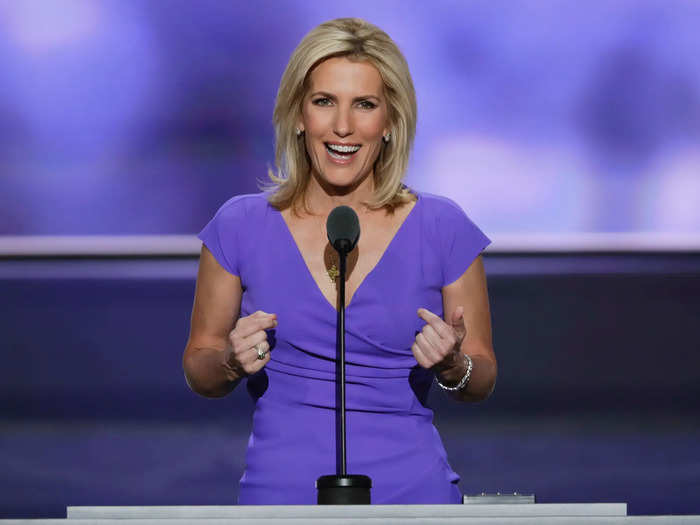
Sources: The New Yorker, Washington Post, Newsweek
Around that time, the Washington Post, called her "Trump before Trump" and pointed out the parallels between Ingraham and the president. Both were wealthy, based on the East Coast, and yet both said they spoke for the "heartland."

Source: Washington Post
Fox News hired her even though management was aware of past clashes she'd had with producers. According to Vanity Fair, she caused disputes on-set so often that newsroom staff watch the muted monitors for the drama.

Source: Vanity Fair
She had also entered the inner circle of Trump advisers, like Steve Bannon. In late 2017, at Breitbart News HQ, the far-right media group, Bannon hosted a party for the launch of her latest book "Billionaire at the Barricades: The Populist Revolution from Reagan to Trump."

Source: Politico
Then, in 2018, she had a run of controversies. First she insulted NBA stars LeBron James and Kevin Durant. She said: "It's always unwise to seek political advice from someone who gets paid $100 million a year to bounce a ball," then she told them to "shut up and dribble."

James ended up naming his new television show "Shut Up and Dribble."
Source: Vulture
A month later she lost advertisers after mocking Parkland shooting survivor David Hogg for not getting into four colleges. Hogg responded by calling for a boycott of her show. Fox News management stood by her, and online Russian Twitter-bots came to her defense.

Within 48 hours, the hashtag #istandwithlaura was trending.
Sources: Business Insider, The New York Times, Business Insider
In June 2018, Ingraham said migrant child detention camps were comparable to "summer camps." She said it to defend Trump from criticism of the federal government's policy of separating children from their parents at if caught trying to illegally cross the US-Mexico border.

Source: Business Insider
In August, she was batting away controversy again when she said America was no longer the same because of "demographic changes." She said illegal immigration was one of the causes, and that it wasn't about race or ethnicity. But that wasn't how the comments were perceived.

Source: Business Insider
All the while she was also dealing with her brother Curtis, who, on Twitter from early 2018, began attacking her. He called her things like "a Nazi sympathizer," and a "racist." He told The Daily Beast that their relationship deteriorated after she joined Fox News.

Sources: Washington Post, The Daily Beast
In September 2019, she struck again. She compared environmental activist Greta Thunberg, and her supporters to characters in "Children of the Corn," a horror story by Stephen King. In the story, children dressed similar to Amish people are told by their god to murder adults in rural Nebraska.

Sources: The Guardian, Washington Post
But it was in late 2019, as Trump faced impeachment, that she found her purpose, according to Slate. While her Fox News colleague Tucker Carlson focused on earnest explanations, and Sean Hannity raged, Ingraham used her law credentials to bolster her argument that the impeachment trial was a sham.

Source: Slate
Ingraham moved from knocking the impeachment to dismissing the coronavirus. In February, she called Democrats the "pandemic party," and said they were trying to "weaponize it" to beat Trump. Then, in March, she called the media "panic pushers."

She also posted then deleted a tweet that said, "great time to fly if not in at-risk population."
But after Trump declared a national emergency in mid March, she took it more seriously, and called it a "dangerous health crisis," according to the Washington Post.
Sources: Business Insider, Youtube, Washington Post
Her controversial takes are clearly something her audience likes. In February 2020, she had 3.6 million viewers, which is the most a female cable news host has ever had.

With results like that, it's unlikely she'll be avoiding controversy anytime soon.
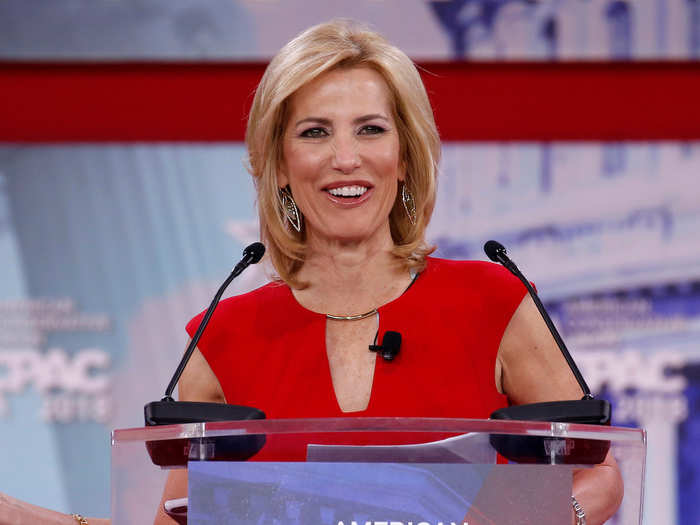
Source: The New York Times
Popular Right Now
Advertisement